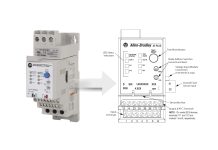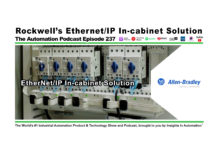
It was the summer of 1969, and Information Instruments, Inc (3I) became the second company (after DEC) to supply a “Standard Machine Controller” to the GM’s Hydra-Matic division, several weeks ahead of Bedford Associates and their legendary Modicon 084.

While GM Hydra-Matic Computer Group was extremely happy with how the PDQ-II preformed on the Forward Clutch Line, earning it the nickname “Pretty Dang Quick,” overall GM would go on to favor the 084 over the PDQ-II.
Taking part in GM’s “Standard Machine Controller” product evaluation is said to have convinced the president of 3I that there was great potential for these products, and for his company to be competitive in this emerging market they were going to need additional funding.
This is said to be the driving factor behind 3I signing a deal with Allen-Bradley in which 3I sold A-B a 25% share in the company, along with the option to acquire the rest of the company at a later date. And as part of that deal, Allen-Bradley also gained the exclusive rights to sell and service the PDQ-II product line.

The Bulletin 1760 Programmable Controller from Allen-Bradley
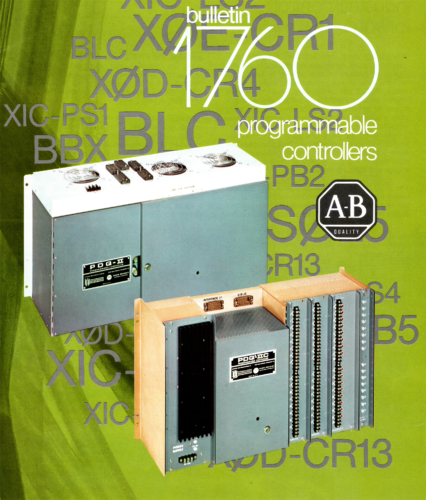
The PDQ-II (along with PDQ-II Compact) are featured in the above image, which I scanned in from the front cover of A-B Publication SD27 from 1973 (superseded the 1970 version.)
This brochure touts the PDQ-II as a solid state programmable controller designed to be rugged and reliable enough to be installed in industrial applications. It also touts that it’s a device which can be installed, programmed, and maintained by existing plant personal.
As a solid state equivalent of relay control panels, the main advantage of the PDQ-II (and literally all programmable controllers) was that changes can be made via its program, instead of the laborious process of editing volumes of wiring schematics followed by the time consuming process of actually rewriting the relay control panels to match the updated drawings.
And while the PDQ-II is a “first generation” PLC, the product’s block diagram (from the same brochure mentioned above) clearly shows the very familiar representation of the components that would go on to become standard with most all programmable controllers:

Editor’s Note: One term in the above diagram that did not become widely used is “Control Logic.” In most PLCs that component is labeled as the “CPU” or “Processor.” While it may just be a coincidence, I found it interesting that thirty years later A-B would release a new generation of programmable controllers called the “ControlLogix,” which could in part in homage to their original PLC?
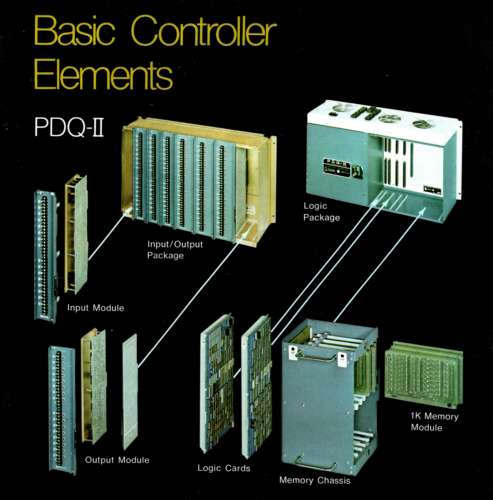
Each PDQ-II System consisted of eight types of components. As shown in the above image, these included the Logic Package (aka PLC Chassis or Rack) into which Logic Cards and a Memory Chassis would be installed.
The Logic Package itself included a power supply, cooling fans, ports to connect to multiple Input Output Packages and Programming Devices, two slots for Logic Cards, and a large slot for the Memory Chassis.

The two Logic Cards (aka Control Logic Modules) supported up to four internal timers, ranging from 0.1 ms to 70 hour time periods. And the Memory Chassis had slots for up to four 1K 8-Bit Random Access Core Memory Modules.
The Input/Output Package, also known as the I/O Chassis, is where the Input and Output Modules were installed, with each modules having its own Plug-in Blocks (aka Removable Terminal Blocks.)
The chassis included a total of eight slots. The first four slots were narrower than the second four, and were used for the input modules. The second four wider slots could accept any combination of Output, Indicating Control Storage, or Analog Timer modules.
As far as I/O Module types are concerned, the PDQ-II system supported 120vac and 24vdc Inputs, as well as 120vac, 24vdc, and Relay Outputs. Each module type was capable up supporting up to 16 I/O Points, and each I/O Point had its own Indicator Lamp.
Output Modules were also individually fused and included Fuse Blown Indicator Lamps. The 120vac TRIAC and 24vdc Open Collector Output Modules supported up to 2 amps, and the N.O. Relay Output Module supported 35va (1 amp fused.)
The PDQ-II also supported up to a total of Four I/O Chassis, with a maximum of 250 Inputs and 250 Outputs. Editor’s Note: I’m not sure why the maximum wasn’t 256 In and 256 Out, as that would have seemed to make more sense?
As far as power, the PDQ-II supported either 120vac or 240vac at 50 or 60hz, and consumed 500 watts itself (in addition to any I/O load requirements.)
The Logic Package with one I/O Package measured 46” high, 32” wide, and 9.5” inches deep, and they had a combined weighed 197lbs, and supported a maximum ambient operating temperature of 60 C.
Optional Accessories
There were also a number of optional accessories available for the PDQ-II. The Manual Programming Panel (MPP) was primarily used to program the controller, and included a Main Programming Panel, a Connector Cable, and a Card to interface with the Control Logic and Memory.
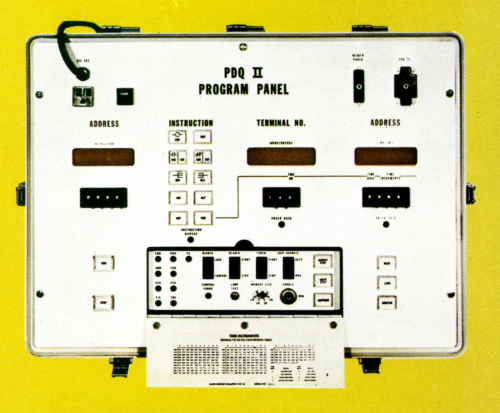
In addition to programming the PDQ-II, the MPP could also be used to Verify Memory, Modify Memory, Monitor the Status of Inputs and Outputs, and create a Paper Tape of the current program by way of the optional Tape Reader/Punch.
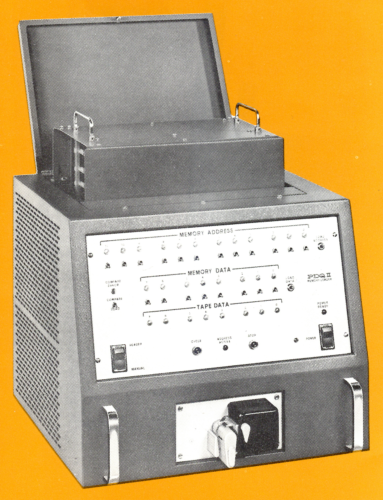
The Memory Loader Accessory was also available to load a program from Tape into the PDQ-II’s Memory, as well as manually Write, Edit, or Verify the memory of the PDQ-II. It could also be used with a Computer to write a program to Paper Tape.
While the PDQ-II was obviously a very capable product for its time, as we look at the programming options in our next article I think it will become clear why Allen-Bradley ultimately took another path.
That said, if you’d like to leave some feedback or share your experience with the PDQ-II, or if you’d like to donate a working unit for us to use in future stories, please use the comment area at the bottom of this page to let us know what’s on your mind.
Until next time, Peace ✌️
If you enjoyed this content, please give it a Like, and consider Sharing a link to it as that is the best way for us to grow our audience, which in turn allows us to produce more content 🙂
Shawn M Tierney
Technology Enthusiast & Content Creator
Support our work and gain access to hundreds members only articles and videos by becoming a member at The Automation Blog or on YouTube. You’ll also find all of my affordable PLC, HMI, and SCADA courses at TheAutomationSchool.com.
- FactoryTalk Design Workbench First Look, CCW Comparison - December 19, 2025
- Drew Allen of Grace Technologies on Automation, Safety, and More (P256) - December 17, 2025
- Robotics in Warehouse Automation with Erik Nieves of Plus One Robotics (P255) - December 10, 2025

Discover more from The Automation Blog
Subscribe to get the latest posts sent to your email.


